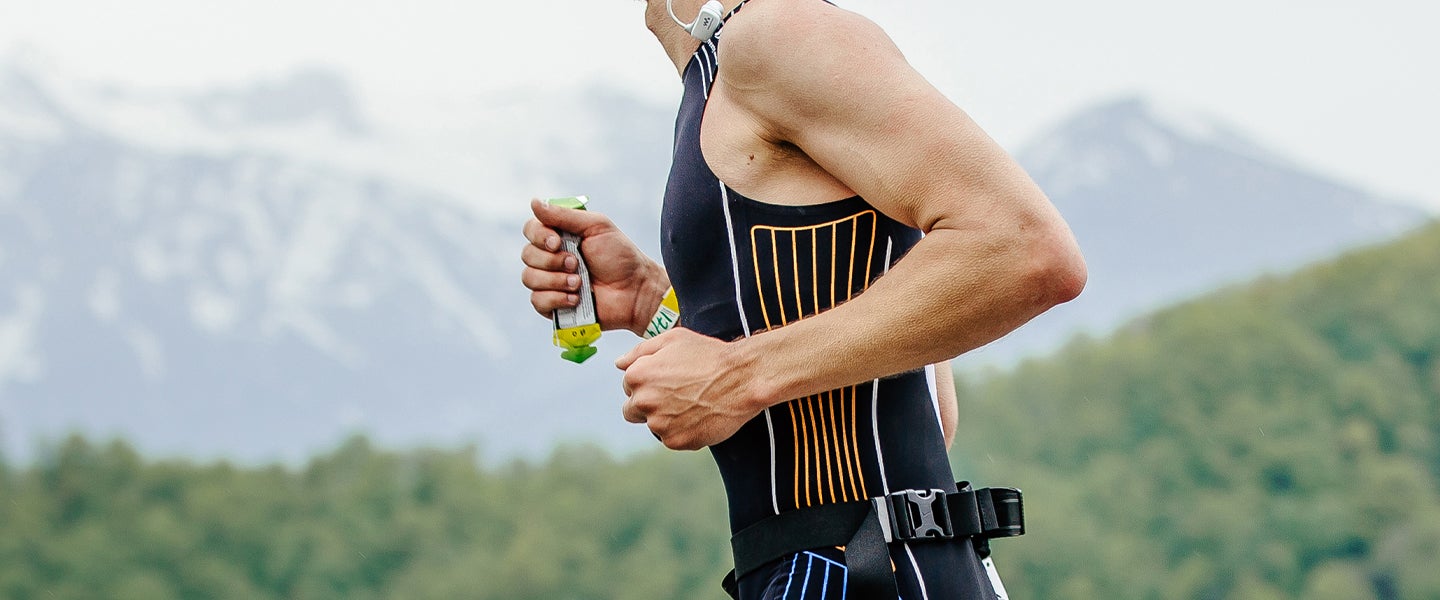I try to jog roughly four miles a day. Most days, by mile three, I want to quit and walk the rest of the way home. It’s hot. It sucks. I already ran pretty far — that’s good enough, right?
But I usually leg it out anyway, trying to trick my brain with a good song, wishing I could smear more stamina onto my body like that peanut butter baby. And according to the Instagram ads I see constantly, I might actually be able to, filling my slack-jawed mouth with something called “running gel” or “energy gel” — like Go-Gurt, but for marathoners.
In short, running gel is advertised as a concentrated concoction of all the chemicals you need to keep going in the middle of a run. Still, I typically ignore the ads. They seem too good to be true, or too intense to actually spend money on. But would they help me convince my hampered willpower to keep my legs going?
“Basically, energy gels are sugar with a few other things added in, like salts and minerals,” says Paul Ronto, marathon runner and owner of the running shoe review site RunRepeat. “When your body is burning energy, sugar is the easiest fuel to replace, because it’s absorbed quickly and can boost how you’re feeling.”
So, it’s just sugar? Really? Can’t I get that… anywhere?
Pretty much, says Abbey Sharp, a dietitian and nutrition expert. “Running gels are made with simple sugar, like glucose and/or fructose, to give you fast, easily digested energy for running and other higher-level activity. The gels offer the straight-up carbs without any fiber to slow down their absorption or cause digestive distress while on the run.”
Energy Gels for Running Work Because Your Body Needs the Sugar
In other words, you’d be just as good eating a banana, but that’d be kinda tough in the middle of a marathon. “You’re breathing heavy and you usually have a fairly dry mouth, so a bar can be physically hard to chew and swallow, while gels can be much easier to ingest,” Ronto explains. “Also, they work faster if you drink water while eating them. It helps your body absorb the sugars more quickly, and makes them a little easier to swallow since some can be pretty thick.”
Again, it can’t be said enough, you’re really just sucking down sugar for a quick blast of energy. Knowing this, Ronto says his “cheapo” preferred version of running gel is packets of honey you’d find in a coffee shop. “I personally don’t use gels because I don’t think they taste good,” he explains. “I’ve used them, and I do think they work, but I haven’t found one that’s palatable to me in the middle of a long run. I prefer either the chew bloks, the sport beans or even just old-fashioned honey packets taken from any fast-food joint!”
“Honey is fructose and glucose, so it’s the same thing,” Sharp responds when I tell her about Ronto’s DIY strategy. “But just like the marketed gel packets, they’re mostly sugar, so they will not, by nature, last very long — and you’ll have to use another one every 30 to 45 minutes.”
Ronto agrees: “Ultimately, your body can only store so much energy, so if you plan to run really long distances, you may need to bring extra packets in order to replenish the fuel.”
Running Gels Are a Short-Term Fix
Even if I were to suck down a running packet while sitting on the couch, Sharp says, the reaction would be the same: a quick sugar rush followed by a crash. “You’d just be getting a good hit of straight-up sugar. About 25 grams of carbs, that’s less than a bag of Skittles!” she says. “So they’d be contributing calories that may not be necessary, but not a big deal [as] an occasional treat. Personally, I’d rather eat the Skittles!”
In the meantime, there are some gels that offer more than just sugar. Some contain electrolytes and some have caffeine, Ronto says, which helps “replace some of the salts lost through sweat and give you an artificial boost like a cup of coffee does in the morning.”
Sharp says these gels may be good for longer runs or runs in the heat, because when you sweat or exercise for a long period of time, “you lose electrolytes like sodium, magnesium, potassium. And low electrolytes make you feel sluggish and fatigued, so the electrolytes are completely separate from the sugar, which is the energy.”
But again, for most recreational runners, a banana before a run and just eating healthy in general is the way to go. “If you’re running long distances, like full- or half-marathons that require you to maintain stamina over an hour, [the gels] may help you refuel energy to continue. Otherwise they’re not necessary,” Sharp explains.
Most Runners Probably Don’t Need Gels
Moreover, according to nutrition counselor Taylor Wolfram, unless you’re an endurance athlete, you don’t need to carry fuel with you on jogs or bike rides. “For the typical gym-goer or jogger, a balanced meal after your workout will suffice,” she says.
If you really want to try one, maybe buy a few packets and save them for an especially hot run. Otherwise, save your money.
Or take it from Ronto and learn to embrace marathon energy in all forms. “To be honest, I was never going for the fastest time when I was running marathons. I was going for the experience, and I’ve had people hand me fruit, Dunkin’ Donuts, pizza, beer and even a shot of tequila once at the Moab half,” he says. “So I’m usually up for anything that makes me momentarily forget I am running for three to four hours.”

